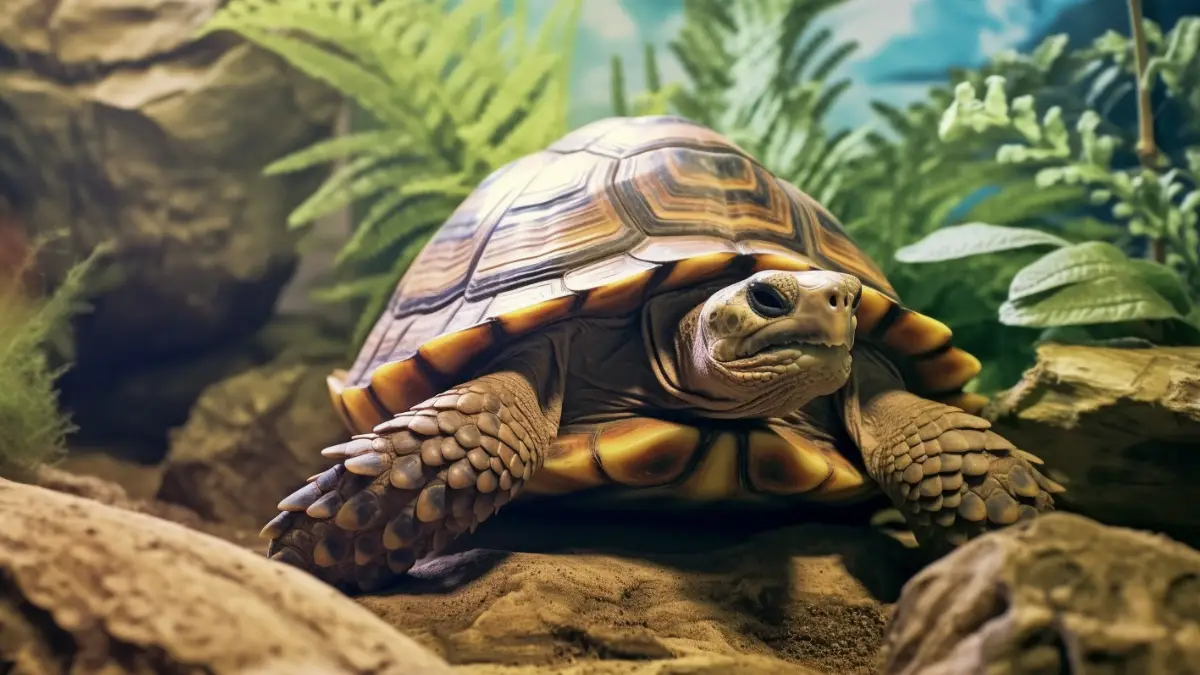Do Tortoise Shed? Unveiling the Hidden Skin and Shell Secrets of These Ancient Creatures
An unbreakable bond forms in the heart of every tortoise owner. Tortoises are lifelong companions that are simply amazing. However, as they age and begin to shed skin, a symphony of worry unfolds.
So, do tortoise shed? Well, yes. Tortoises do shed their skin as they grow. Shedding is their ancient art of growth and renewal. Their skin and shell do not grow as they become old. So they have to shed them and replace them with bigger versions.
In this article, we will talk all about tortoise shedding. We will tell you why, when, and how of this process. We will also offer insights on how you can be the best caretaker during such natural spectacles.
Do Tortoise Shed? Here are the Answers
Contents
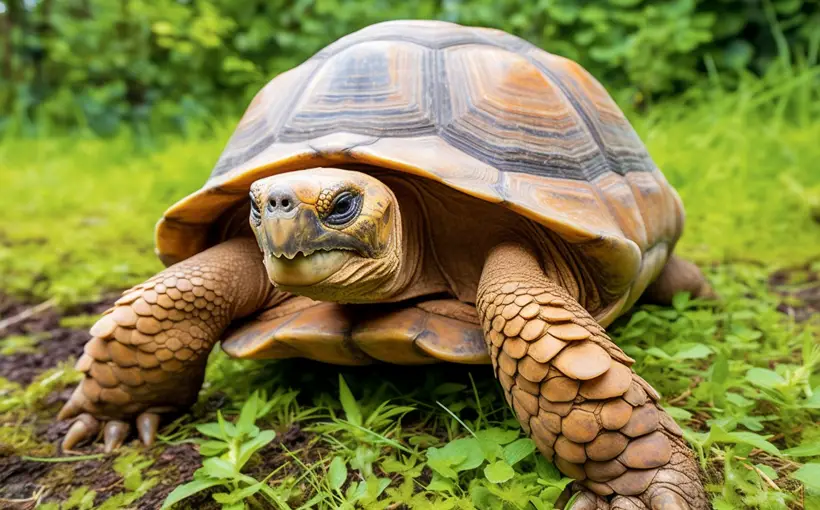
As you know by now, tortoises shed their skin and shells. They do so for the following reasons:
1. Growth and Expansion
A tortoiseshell is made of armor that does not expand. That means as they grow, the shell must all get bigger. But the shell can’t stretch or grow new cells. So, to make room for their bodies, tortoises have a neat trick. They shed the outer layer to grow a bigger layer.
2. Skin Health and Rejuvenation
Just like us humans, tortoises also get cuts and scratches. And their unique way of coping is through shedding. This process helps them heal from those minor scrapes and cuts.
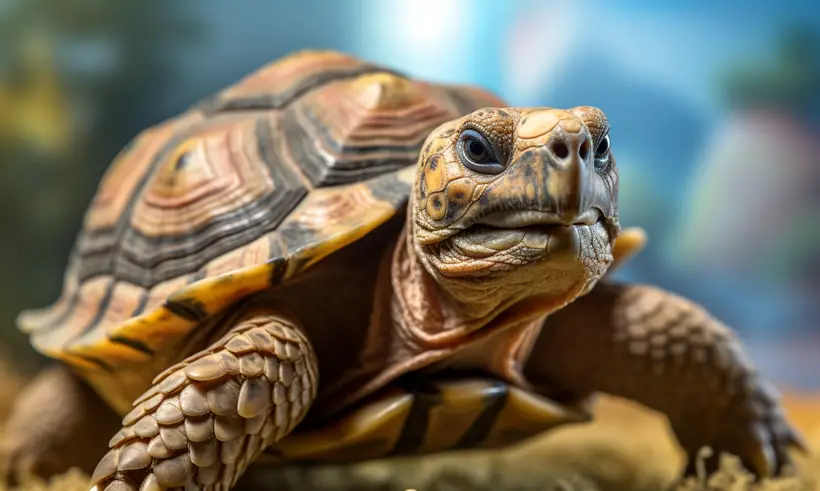
3. Dealing with Parasites
Ticks and mites are common parasites that plague reptiles like tortoises. These latch on their skins, consuming blood and causing infections. Shedding is a strategic move to fight off these unwanted guests.
4. Weather and Environmental Shifts
When the weather gets too hot, tortoises will have challenges of overheating. Plus, they are inside warm, tough shells. So the temperatures of their bodies can easily soar. But shedding plays a crucial role here. It removes layers of skin that are worn out and traps excess heat.
Conversely, during winter, they want to stay as warm as possible. So, they will shed the old skin layer that is damaged and too thin. With a fresh thicker layer, they can better insulate themselves from the chill.
Shedding Frequency: What’s Normal for Tortoises?
Tortoises shed their skins after every few months. We cannot tell you the exact amount of months or time as each tortoise has its own rhythm.
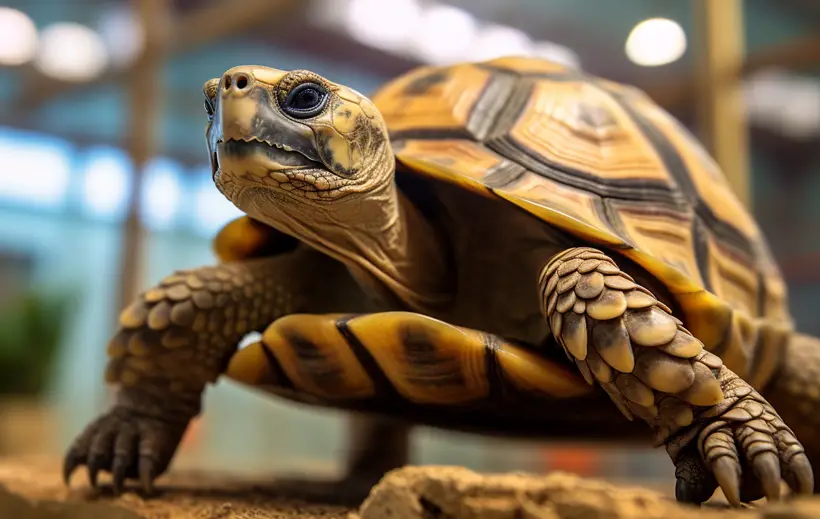
Below are factors that will affect how often your tortoise sheds:
- Age and growth: Young tortoises will shed more frequently in their early life. This is because they are rapidly growing. Their shells need to adapt to their changing bodies. Expect shedding after every few weeks as they outgrow their current shell.
- Species: Various species have their own shedding tempos. Some shed more often than others. For instance, if you own a Mediterranean tortoise, it will be shedding more frequently than other species.
- Health and well-being: A healthy tortoise will shed more regularly. But when its health is compromised, it will halt shedding temporarily. Shedding skin often shows that they are healthy and everything is ticking as it should.
- Seasonal changes: Just as we change clothes during various seasons, so do tortoises. During seasons of rapid environmental shifts, the shedding will become more frequent. This is their way of syncing with natural rhythms.
- Body part focus: Tortoises are not like other reptiles, such as snakes. They do not shed all their skin at once. At one point, they will be shedding around their head. The next day, they will be shedding around their limbs.
Spotting Signs of Shedding
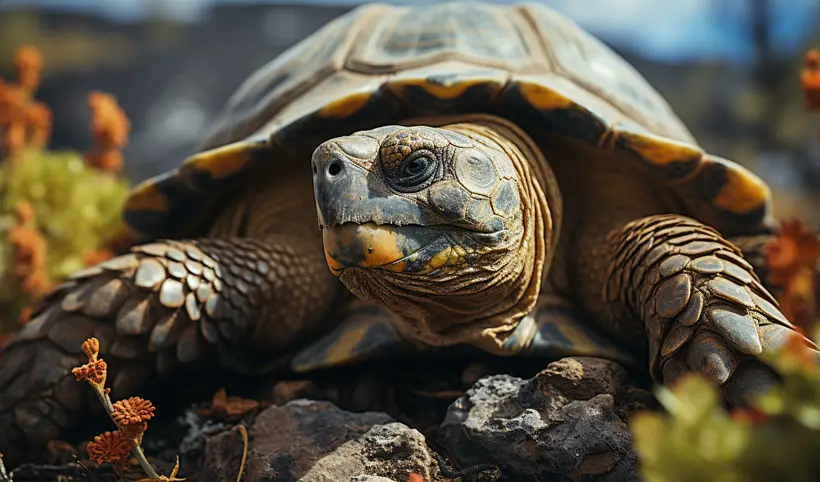
Below is how you can tell if your tortoise is shedding:
- Dull appearance: You will observe a faded appearance on its skin. This means that the skin has started detaching from its body.
- Flaky skin: As the shedding process begins, your pet’s skin will be peeling. This peeling leaves flakes that are easily visible.
- Increased scratching: Tortoises will rub or scratch against objects more often when in this process.
- Observed skin shed: Sometimes, you might be lucky to find pieces of shed skin in their habitat.
- More sun basking: Tortoises will also busk in the sun more than usual during this process. The extra warmth and UV rays help loosen the old skin.
Caring for a Tortoise while it Sheds
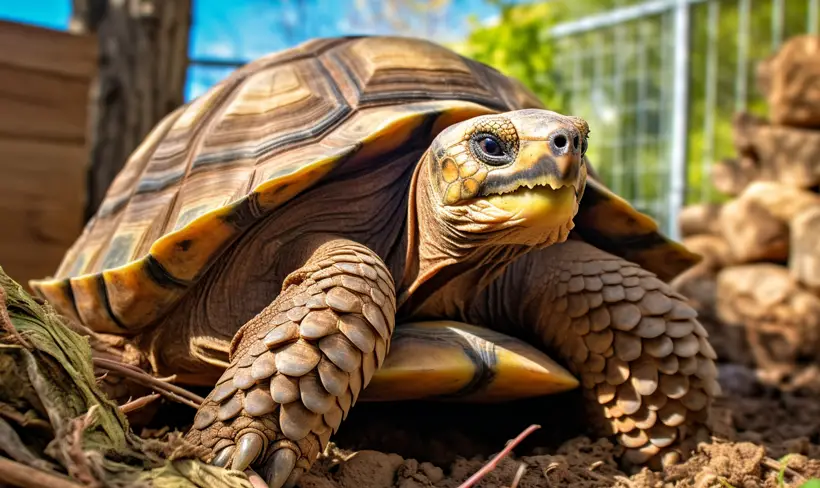
Follow these tips to ensure your slow friend has the best comfort during this transformative process:
- Increase the humidity: Species in temperate regions need moderate humidity of 40% to 60%. The Russian species needs a humidity between 30% to 50%. Those from arid areas need a humidity of up to 80%.
When they are shedding, they have the highest humidity possible for the species. It will help soften the old skin and make shedding smoother.
- Give basking opportunities: Offer your slow friend ample basking spots. You could take them outdoors or use a heat lamp. Maintain temperatures of 35 to 40 degrees, depending on the species.
- Hydration is key: Ensure the tortoise has access to clean and fresh water at all times.
- Handle it gently: When shedding, their skins are more sensitive. So avoid excessive touching and give them their space.
- Avoid peeling: It is tempting to help your loved pet during this process by peeling off its skin. However, you should resist this urge. Let your tortoise undergo the stage naturally. Helping it could lead to injuries or interrupt its rejuvenation.
- Keep the habitat clean: Ensure their enclosures are cleaned regularly to prevent any bacteria or irritants.
Signs of Abnormal Shedding to Watch out for
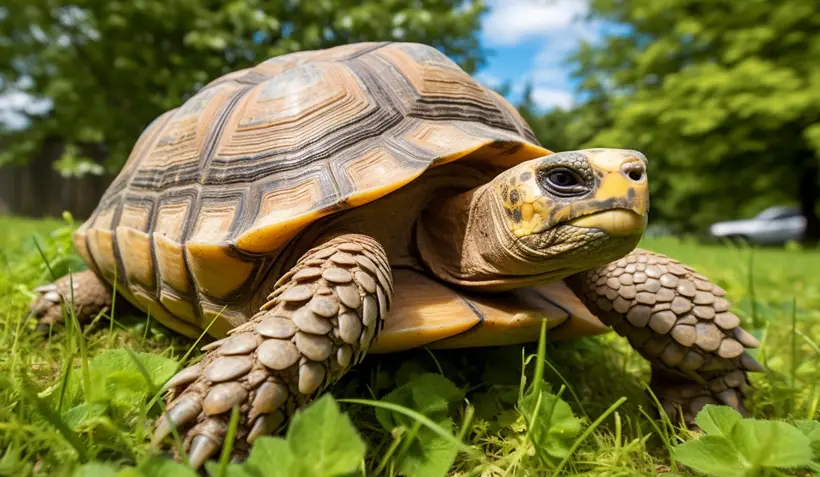
There might be moments where notes do not align. Here are signals to watch out for:
- Prolonged shedding for several weeks
- Difficulty shedding. This could indicate skin problems
- Incomplete shedding such that patches are left behind
- Distressed behaviors like hiding excessively
- Abnormal skin appearances like blood spots, torn, and discoloration
- Lack of appetite
- Rapid weight loss
If you notice any of the above, you should take your pet to a qualified vet. They will assess the situation and offer a remedy for better skin shedding.
FAQs
Below are answers to some of the questions you might have:
No. This process is not painful for your slow friend. However, it’s a little uncomfortable for them due to the peeling of the old skin. You could provide them with a warm and humid environment to ease this process.
No. You cannot rush nature. You can only aid them by providing them with an environment that provides comfort. This includes the said warmth and humidity.
Shedding is an uncomfortable process. It leads to them altering their behavior slightly. For instance, they might be more sluggish or prefer a quieter environment. You will also find them basking in the sun more often.
Conclusion
The above has surely satisfied your curiosity about the question, do tortoise shed? Yes, they do. And this is more than just a skin deep. It is their adaptation to changing environments, growth and fight off parasites.
So, next time you see your slow friend with flaky skin, do not panic. They are growing and adapting to new things in their life. Just be sure to support this stage by providing the necessary care discussed above.

